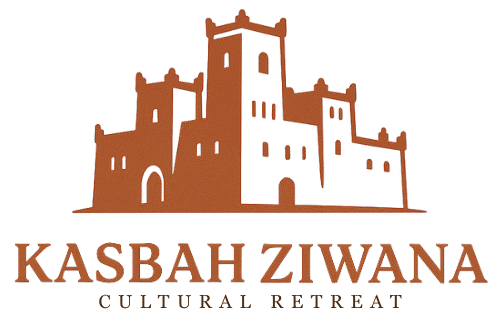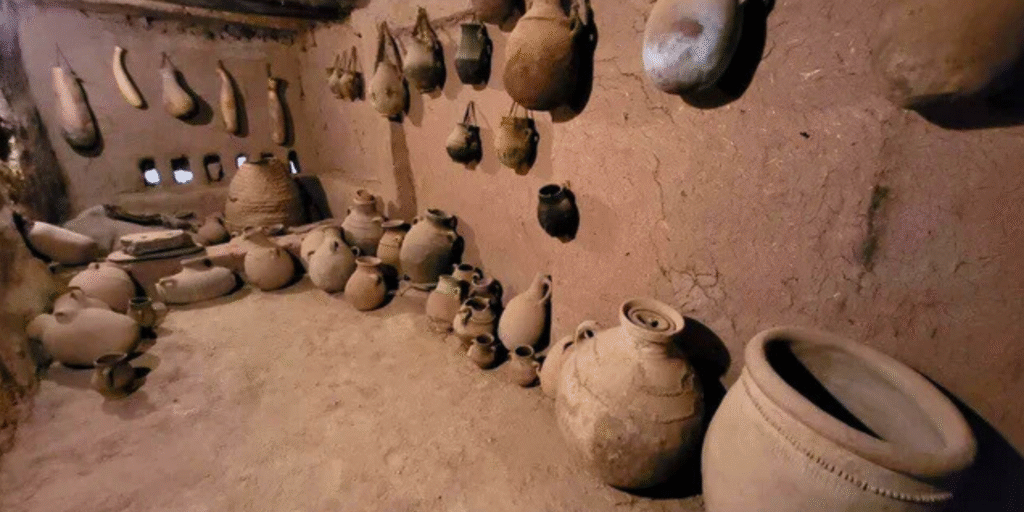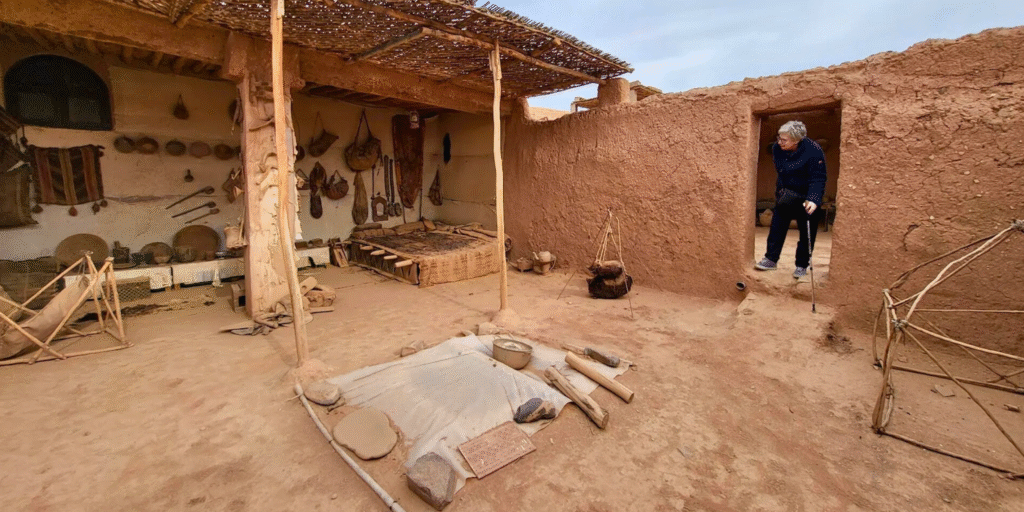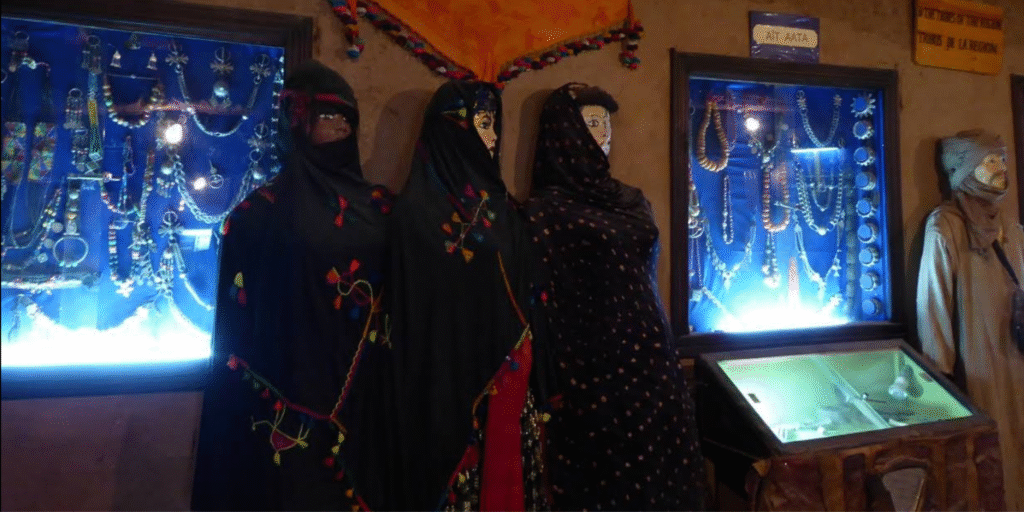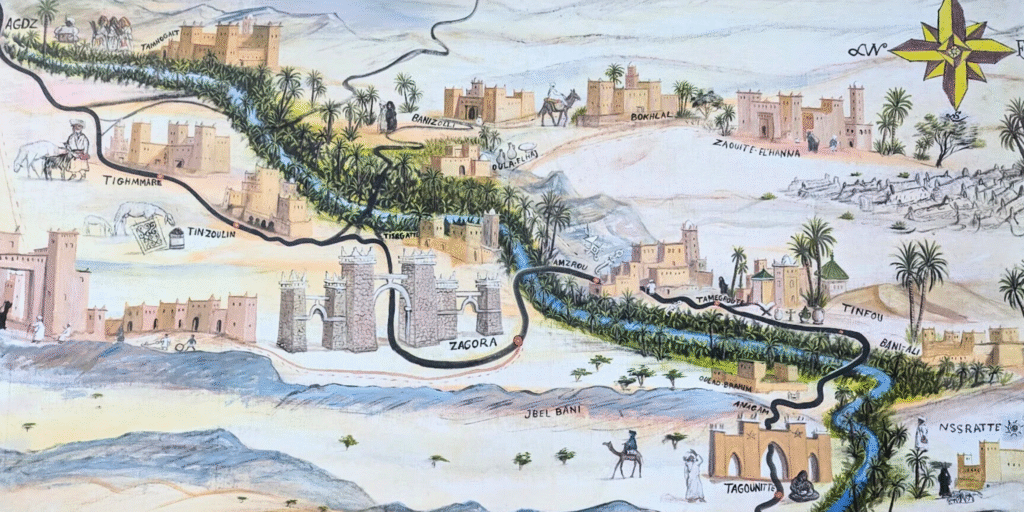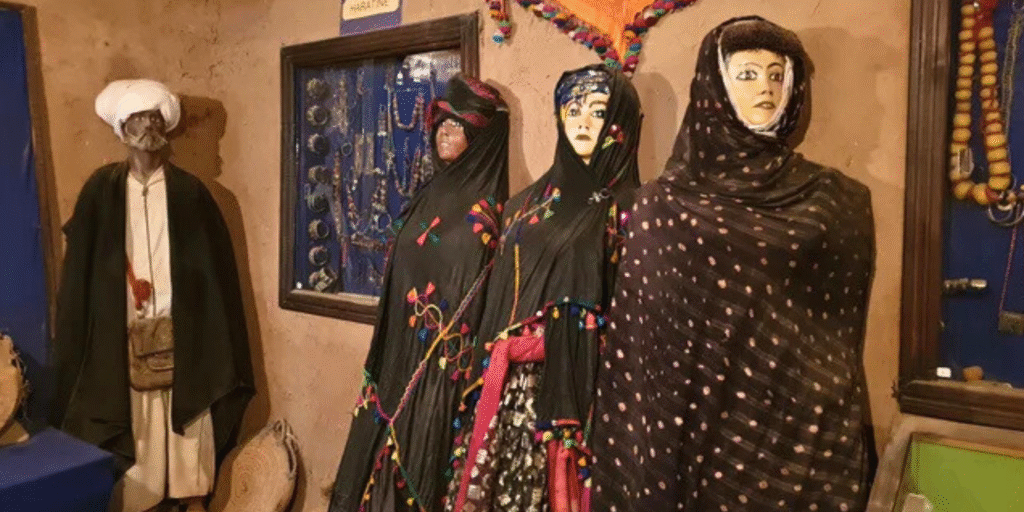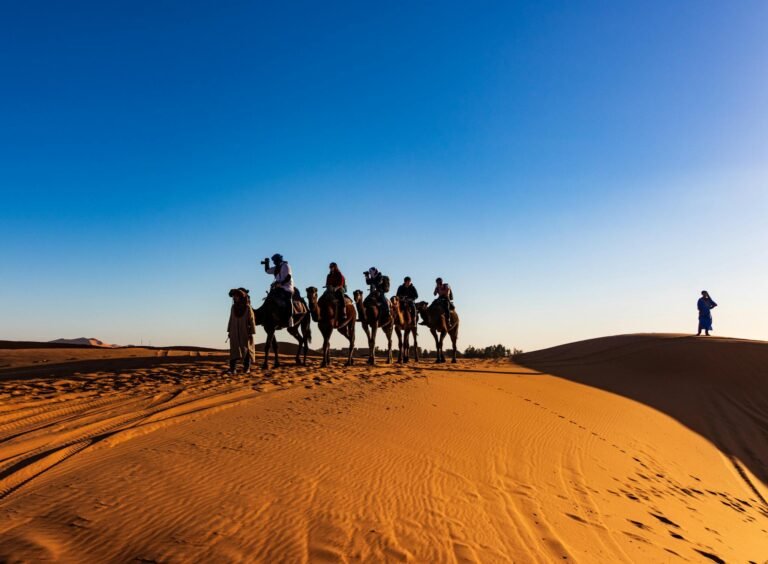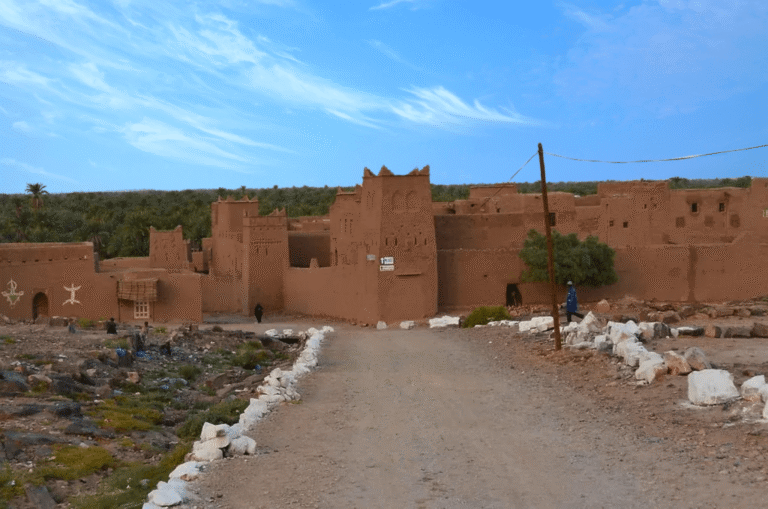Museum of Art & Traditions – Discover the Living Heritage of the Draa Valley
🎧 The Coming Exhibitions of Kasbah Ziwana
A new artistic chapter is unfolding at Kasbah Ziwana. This podcast explores the upcoming Museum of Art Traditions — a cultural initiative that’s set to enrich the heart of the kasbah with inspiring exhibitions and creative storytelling.

Museum of Art & Traditions – Discover the Living Heritage of the Draa Valley
Located in Ksar Tissergate, just 8 km north of Zagora, the Museum of Art & Traditions captures the essence of southern Morocco’s tribal life.
This museum preserves daily tools, tribal garments, musical instruments, and ancestral medicine. It’s built within a real kasbah, adding depth to the visitor experience.
Introduction to the Museum
The Museum of Art & Traditions is more than a tourist stop. It is an essential space for understanding the social and historical fabric of the Draa Valley. Situated inside a fortified kasbah that dates back centuries, the museum offers a first-hand look at what life was like for Morocco’s tribal groups.
Walking through the narrow, clay-walled halls, you’ll see items used for cooking, farming, healing, and storytelling. Each exhibit highlights a piece of local life—without feeling staged or commercial. The goal is authenticity, not theatrics.
Local guides are available to offer extra context, but even on your own, the signage and visual displays provide clear understanding. It’s compact but dense with meaning.
What makes the museum unique is that it remains grounded. It doesn’t try to be flashy or tech-driven. Instead, it leans into its setting and culture. This simplicity is what keeps it real—and relevant.
Inside the Museum – What to Expect
Traditional Clothing and Jewelry
One of the museum’s most captivating areas features mannequins dressed in traditional Berber attire.
You’ll see women’s robes with intricate embroidery, silver fibulas, headscarves, and regional variations from tribes like the Ait Atta and Aarib. Each costume represents a story—of marriage, ceremony, or daily work.
The jewelry collection stands out for its craftsmanship. It includes protective amulets, belt clasps, and handmade silver pieces once passed down through generations. Most items here aren’t for decoration—they served symbolic or protective roles.
The exhibits do an excellent job of showing how beauty, identity, and utility all blend in tribal fashion.
Pottery, Utensils, and Tools
The section on ceramics and tools offers insight into survival and routine.
Hand-thrown pots, water jars, woven baskets, and cooking gear line the walls. Everything was made for use: storing grain, drawing water, baking bread. You won’t find ornamental pieces—only what people needed to live.
You’ll also see ancient agricultural implements, weaving tools, and items used in home construction. This gives you an immediate connection to how resourceful local communities were—and still are.
Herbal Medicine Practices
This quiet corner of the museum feels different—slower, almost spiritual.
Shelves of labeled jars show plants used for healing. From indigestion to fertility issues, each remedy has deep roots in Berber knowledge systems. There are illustrations explaining how herbs were gathered, dried, and applied.
This section speaks to the region’s reliance on natural solutions before modern clinics. It highlights the intelligence in oral traditions and nature-based science.
Why It Matters – Cultural Preservation
The Museum of Art & Traditions doesn’t just store artifacts—it keeps memories alive.
It plays five critical roles:
- Preserving original tools, clothes, and customs
- Educating locals and tourists alike
- Offering research opportunities for Moroccan culture scholars
- Boosting community identity and self-respect
- Supporting responsible cultural tourism
Its existence ensures that knowledge isn’t lost to modernization. In a fast-moving world, museums like this slow things down and protect stories worth remembering.
Visitor Information
- 📍 Location: Ksar Tissergate, 8 km north of Zagora
- 🕒 Opening Hours: Daily, 08:30–19:00
- 💵 Admission: ~25 MAD
- 🗣️ Languages Spoken: Arabic, French, English
- 📷 Photography: Allowed (no flash)
Allow about 45–60 minutes for a relaxed visit.
Nearby Attractions to Enhance Your Trip
Your visit doesn’t need to end at the museum. Add more cultural experiences:
- Tamegroute Pottery Workshops: Meet artisans crafting green-glazed ceramics by hand.
- Zagora Palmeraie Walks: Stroll among date palms and irrigation channels.
- Day Trips to Erg Chegaga: Ride camels and sleep under the stars in the Sahara.
Each complements the museum with hands-on cultural or natural experiences.
Final Thoughts
The Museum of Art & Traditions is not big. It doesn’t take long to walk through. But what it offers is lasting.
It shows how people adapted to the desert, formed communities, and passed down knowledge through generations. It helps visitors understand—not just observe—how culture works in this part of Morocco.
If you’re staying at Kasbah Ziwana or near Zagora, this museum should be at the top of your list. It’s quiet, real, and powerful.
